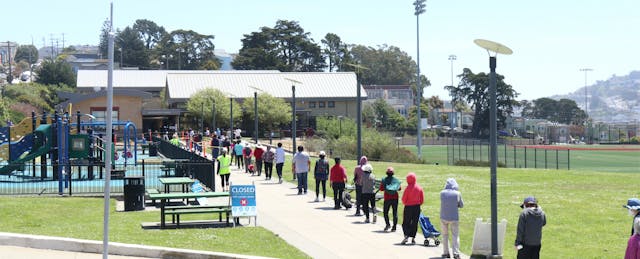Students cooking ramen noodle packets in the dorm microwave have come to symbolize what is deemed to be the universal college experience. However, that image demeans the dire situation of students experiencing food and housing insecurity in higher education.
But it doesn’t have to be this way. Through advocacy on campuses and in communities and ongoing state and federal investment in the real cost of higher education—including housing, food and other supports—we can and should make a firm commitment to students who are doing everything they can to become economically self-sufficient.
The national numbers for food and housing insecurity demonstrate the very real struggle students have to balance between supporting themselves and working toward a degree. The costs of living and tuition require most students experiencing food and housing insecurity to work while also taking on a full-time course load. For example, the California State University at Long Beach Division of Student Affairs highlighted that 80 percent of their students worked while in school to support their families. Many of the jobs were in the retail and restaurant industries, which typically afford flexible hours to students but have been hit hard by the COVID-19 pandemic closures.
The need to work in order to provide for oneself and to pay school tuition is exacerbated by rising costs of living, stagnant wages—and school debt. As the number of high school applicants to California higher education institutions climbs and enrollment at California State Universities grows, students are taking on a significant amount of debt to achieve their higher education degrees.
Indeed, as of 2020, the national student debt crisis reached a striking $1.6 trillion. This debt forebodes ripple effects to come, as graduates will spend a greater portion of their incomes paying off student loans rather than stimulating the economy and supporting their own well-being.
Measuring Hunger and Homelessness
California-based researchers Drs. Rashida Crutchfield and Jennifer Maguire conducted a comprehensive study on student basic needs within the California State University system. The research revealed that 46 percent of students in the system experienced food insecurity in the previous 12 months. They also found that one in 10 students surveyed experienced homelessness in the same time period.
Crutchfield and Maguire’s research also indicated that racial and socioeconomic disparities play a role in which students are in greatest need of basic resources. Students who self-identified as Black and first-generation faced higher rates of food insecurity (65.9 percent) as well as higher rates of housing insecurity (18 percent) than the general population of students in the California State University system.
The escalation of COVID-19 is exacerbating the already vulnerable conditions of students seeking higher education in California and elsewhere. These students are navigating barriers to education and basic needs, which include sudden campus closures, losses in campus service support, transitions to online learning, unemployment and limited access to resources. Another study by the Hope Center found that three out of five students at four-year institutions were facing food or housing insecurity as a result of the pandemic.
Meeting Student Needs
Shifts in employment due to the pandemic created an increase in students seeking basic needs resources on their college campuses. For instance, in the 2019-2020 academic year, the California State University at Long Beach Student Emergency Intervention and Wellness Program received more than five times as many applications as it did the year prior for supports like emergency grants and safe housing. The campus food pantry also saw a high demand and continued its efforts by providing free food, toiletries and hygiene products to more than 200 students per week through “pop-up” contactless distribution.
We urge advocates and decision-makers in California and across the nation to act upon the knowledge that feeding and housing students is an economic investment in our students and the communities they share. The ongoing fiscal support for basic needs for students in California Governor Gavin Newsom’s budget is promising, and we hope to see that reflected in the mid-year adjustment. We also hope to see that mirrored in budgets across the nation and multiplied by federal support. This will ensure the continuation of programs like California’s College Focused Rapid ReHousing rental subsidy program, an innovative approach developed by a nonprofit that offers a sustainable way to address student homelessness.
These are compelling commitments, but more importantly, they are socially and morally correct. Care for our students is an investment in the future for all of us.


